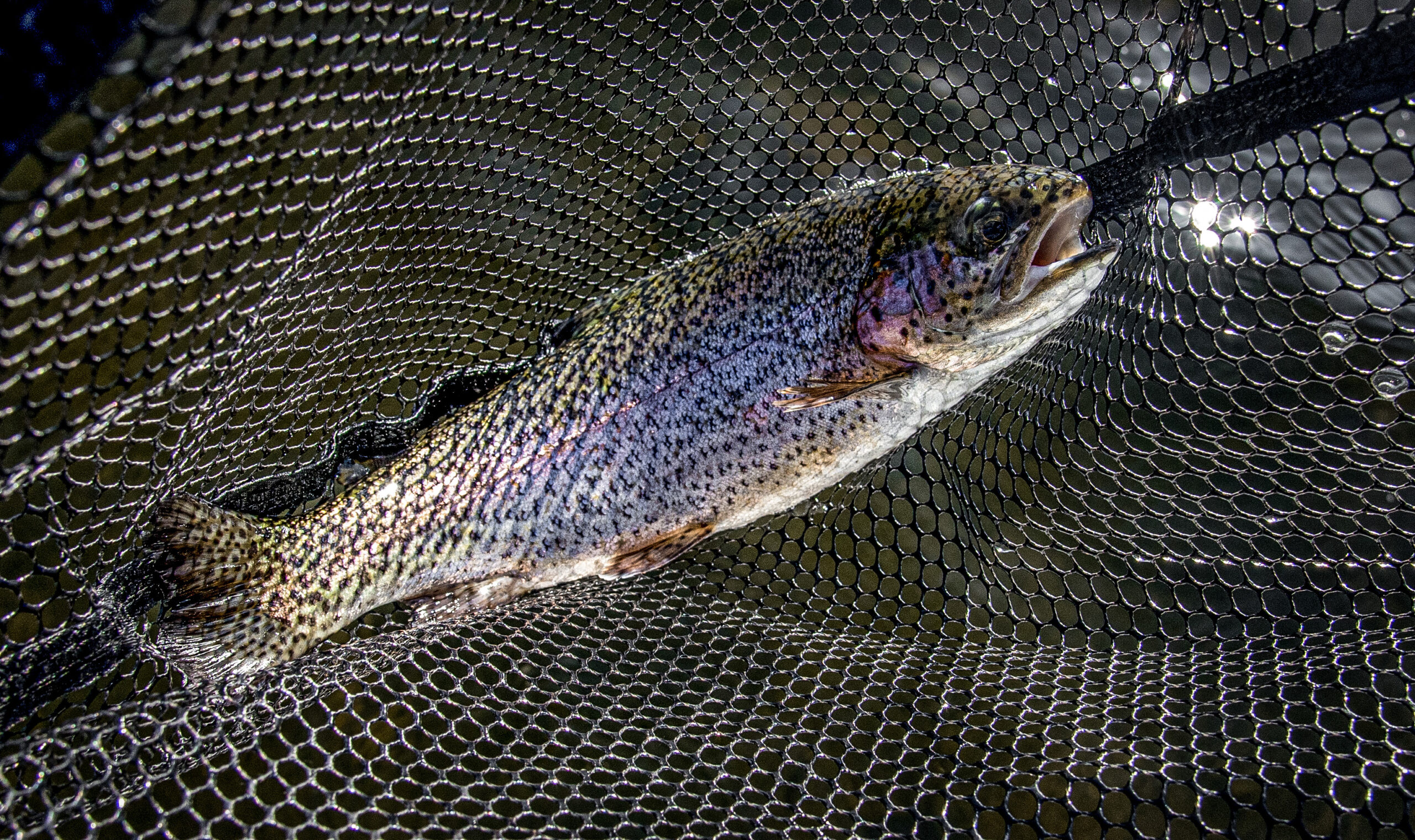A September wind rattled in the yellowing cottonwood leaves and made the red and orange vine maples shiver. The last mile was a series of switchbacks that took us into the Ice Lake basin at 8000 feet above sea level.
Our guide, Barry Cox, led the way on his buckskin, a pack-horse on a lead rope behind him. I was mounted on a bay and dad brought up the rear on a sure-footed gray. I could see the lake finally through the trees, deep blue and green. Alpine meadows with weather-twisted firs and pine trees gave way to steep, landslide country where little in the way of plant life grew. High above, were granite cliffs and rocky, rugged peaks. I shaded my eyes with my hand to look. Somewhere up there, I was told, there were mountain goats.
Barry turned his horse left and we crossed Adams Creek, leaning forward in our saddles as the horses scrambled up the high bank. We rounded a knob and followed a narrow trail along the rocky beach. At the water’s edge, we saw brook trout, our reason for being here. A few eight- to ten-inch brookies hung suspended in the clear blue water where the shallows gave way to deeper water.
We made camp in a little basin away from the water, moving a few rocks to make room for the tent. While dad opened our packs, Barry borrowed a fly rod and headed down to the water. I was right behind him.
Before I could even make a cast, Barry had hooked and landed a ten-inch brook trout. It took three casts before I hooked a fish. I was using a No. 14 Adams and I set it down outside of the shallows and saw a brook trout, coming up and up from the dark green depths. He opened his mouth and took the fly back down. It promised to be a good day of fishing. Barry soon retired for a nap and a lunch of trout while dad and I continued on around the lake. We moved down the beach a few yards whenever the bite slowed.

It didn’t seem to matter what fly we used. After I lost the Adams I switched to a bead head Prince Nymph. We caught fish on whatever fly we tried. A Mosquito pattern worked as did the Hare’s Ear and Zug Bug. Streamer patterns caught fish and so did a Mouserat that I cast alongside a log and swam back.
The most fun were the grasshopper patterns we cast along the shoreline or just outside of the shallows to entice cruising fish. These fish knew how to eat a grasshopper. They exploded on top of the fly, seeming to want to dunk the hopper before swallowing it. In the clear, calm water we could often see the fish as it climbed to smash the fly.
It was three o’clock when we finally stopped for lunch, carrying five brookies back to camp and frying them over a small fire. Afternoon gave way to evening and dad and I fished until it was nearly dark. The trout were so hungry I believe I could have caught 300 fish that day if I had kept at it. They ranged in size from six to eleven inches with most of the fish measuring between eight and ten inches.
Each fish was different in appearance though all were brookies. Some had dull coloration while others were brilliant with orange fins tipped in white. Some had extremely large heads with underfed bodies, older fish whose bodies had not kept up with the growth of their heads. Too many fish and not enough food.
In the morning the fish didn’t come as quickly to the fly as they had the previous night. I guess I spent more time looking at the mountains and the wildflowers too, hoping to imprint on my mind what I was seeing.
The showy daisies were in bloom, as well as alpine buttercups, Indian paintbrush and mountain gentian.
In the afternoon, we rode out, leaning back in our saddles as the horses picked their way down the switchbacks, our stirrups hanging over nothing but the pure mountain air.
# # #
For a copy of the Fishing Central Oregon book, send $29.99 to Gary Lewis Outdoors, PO Box 1364, Bend, OR 97709 To contact Gary Lewis, visit www.GaryLewisOutdoors.com



















